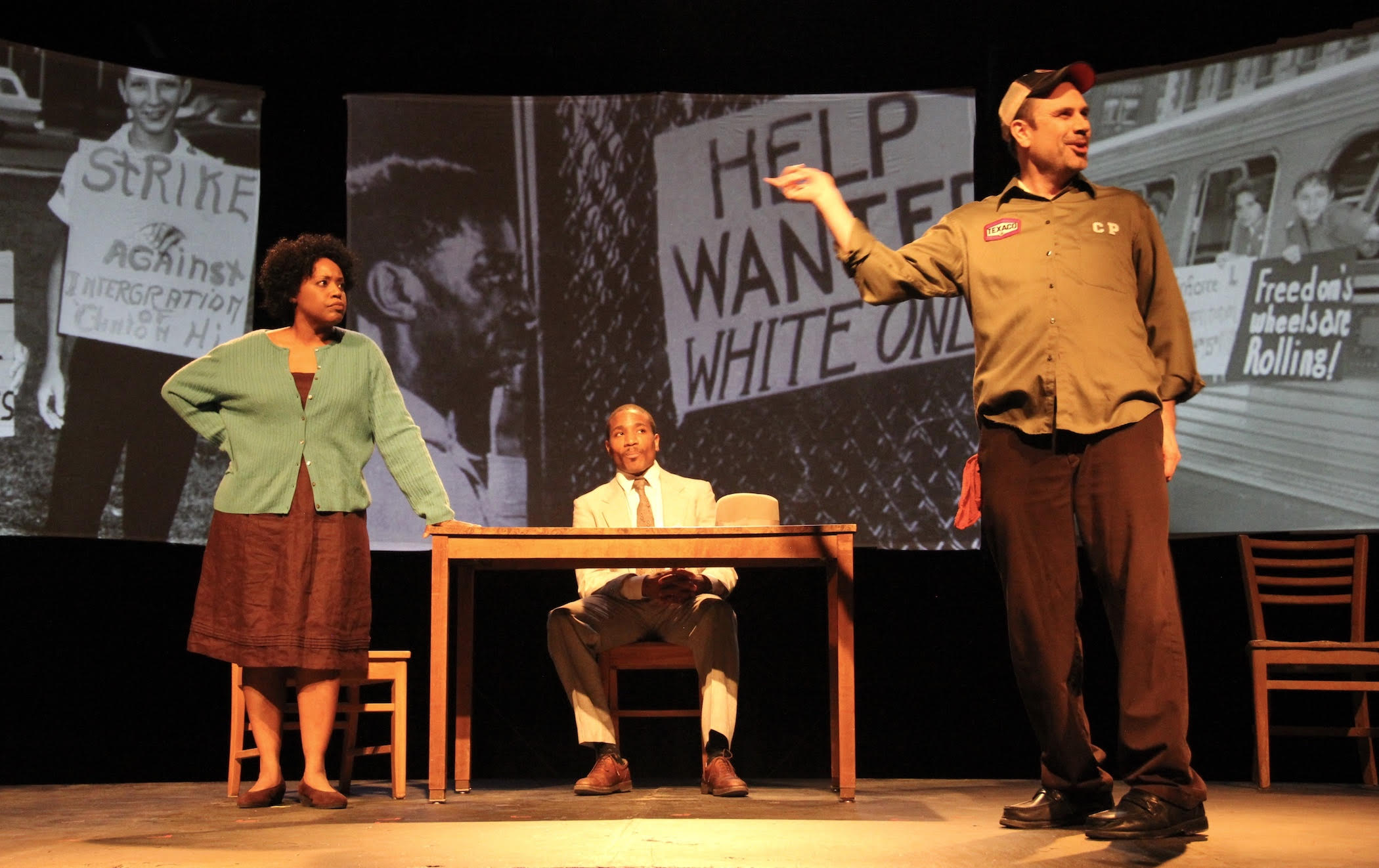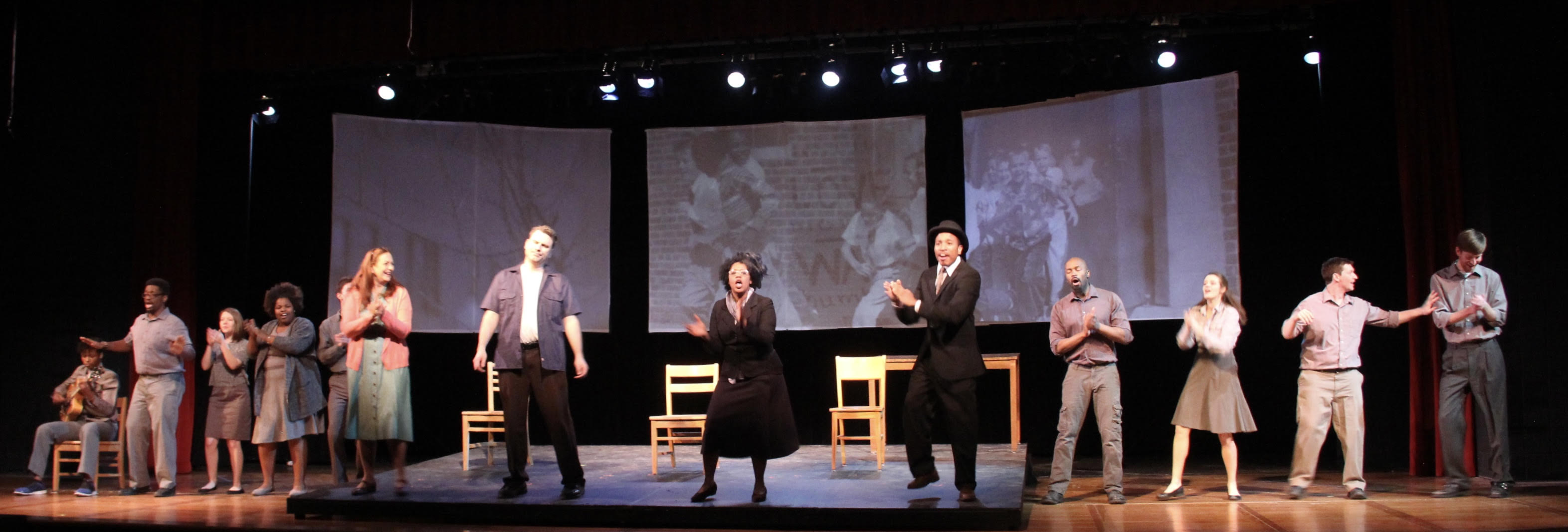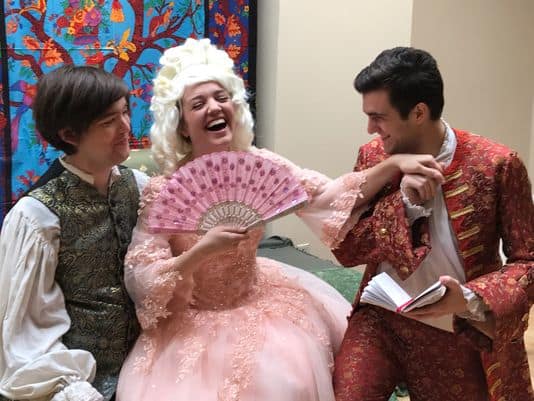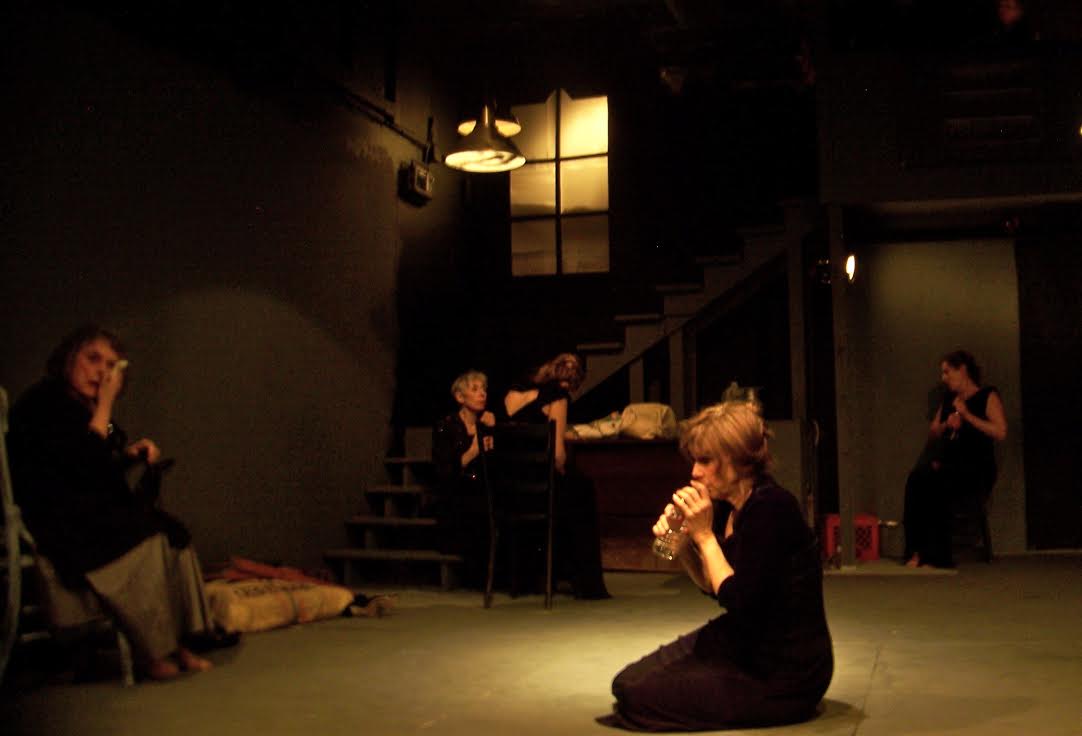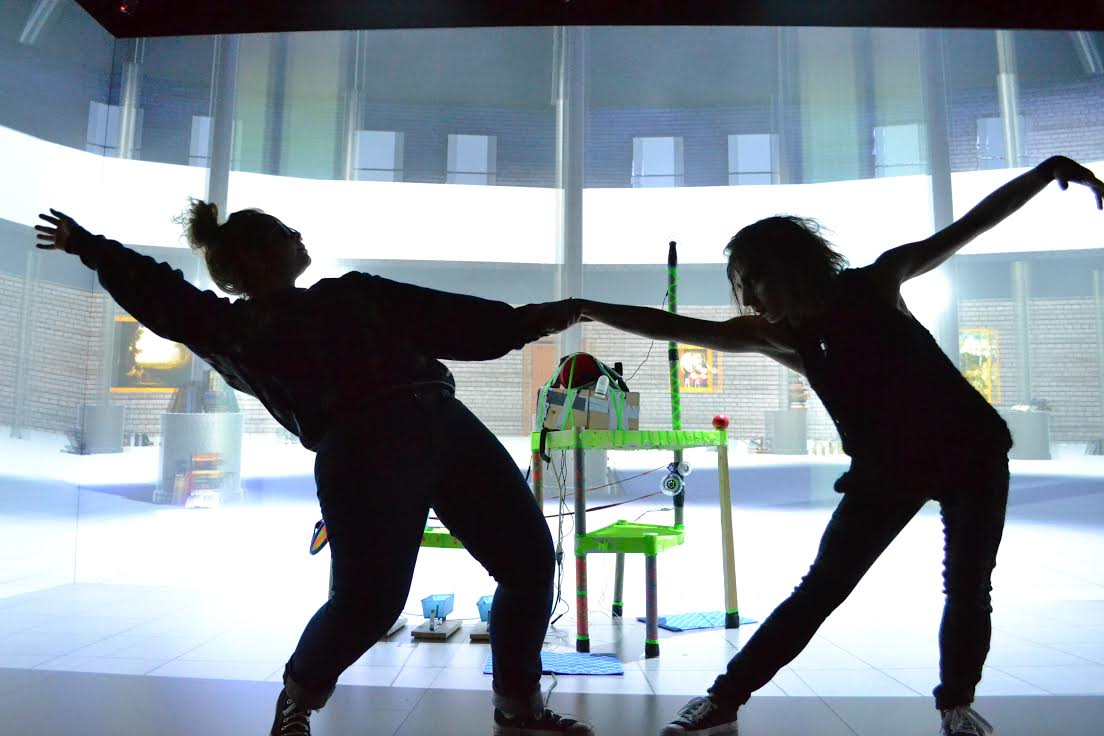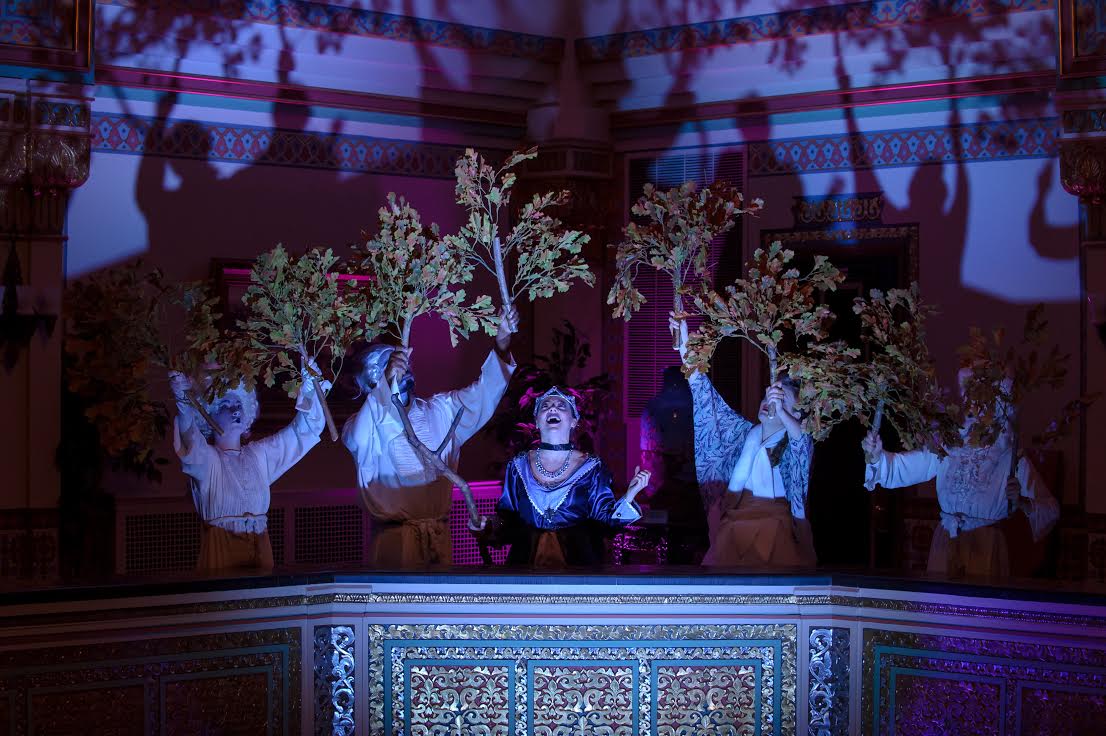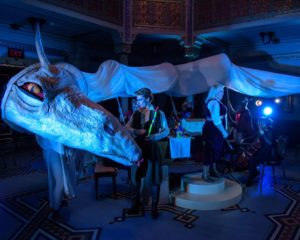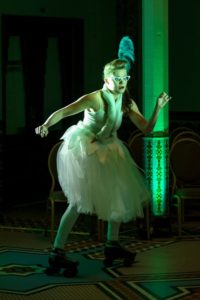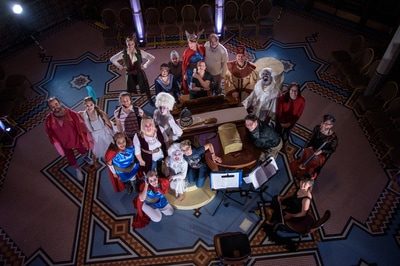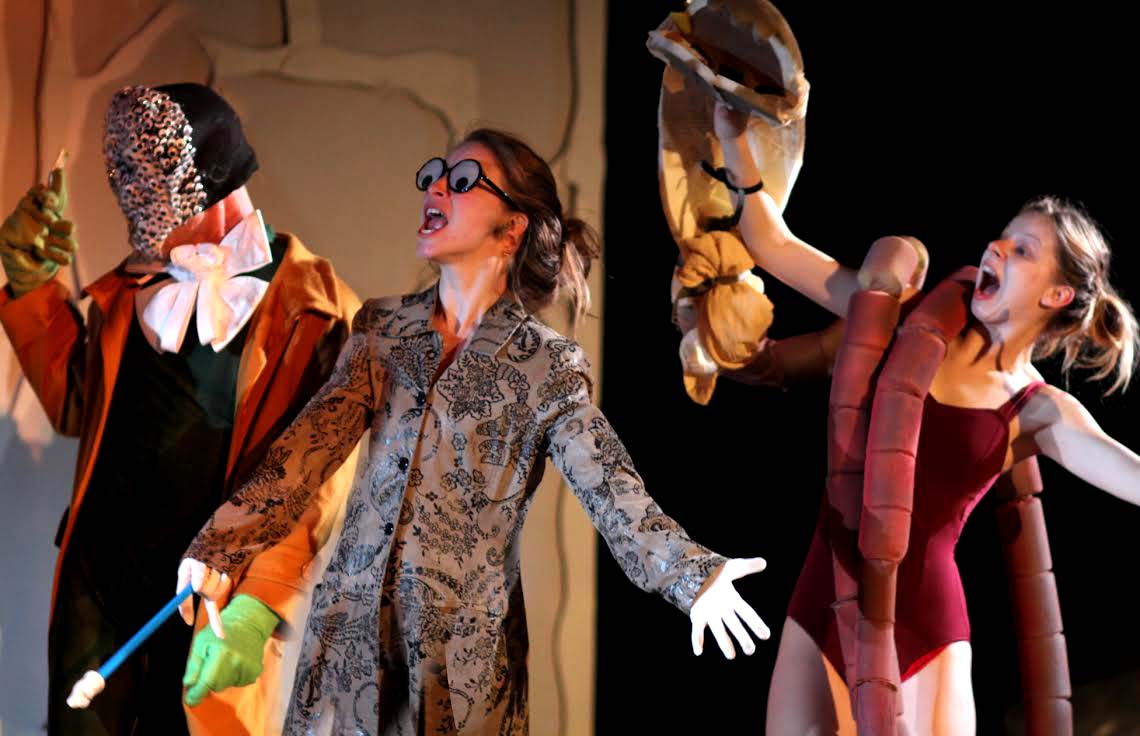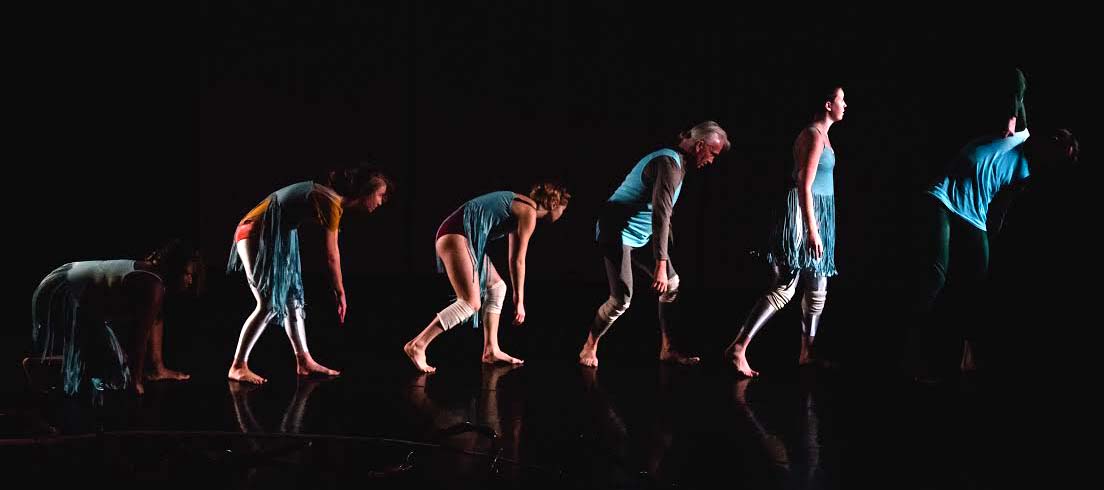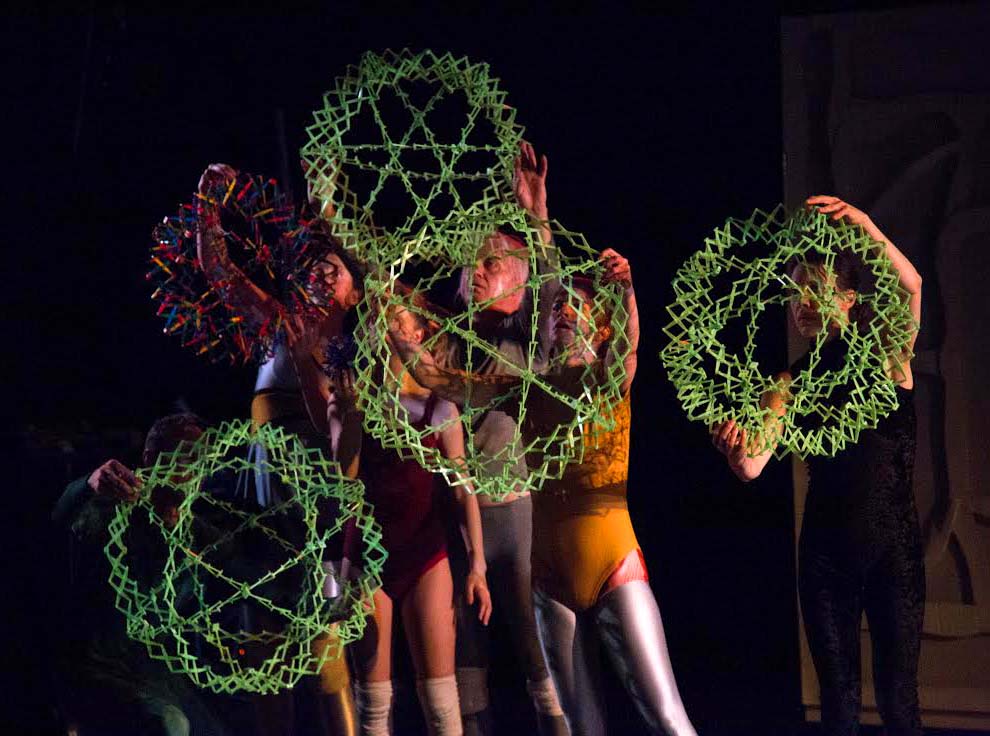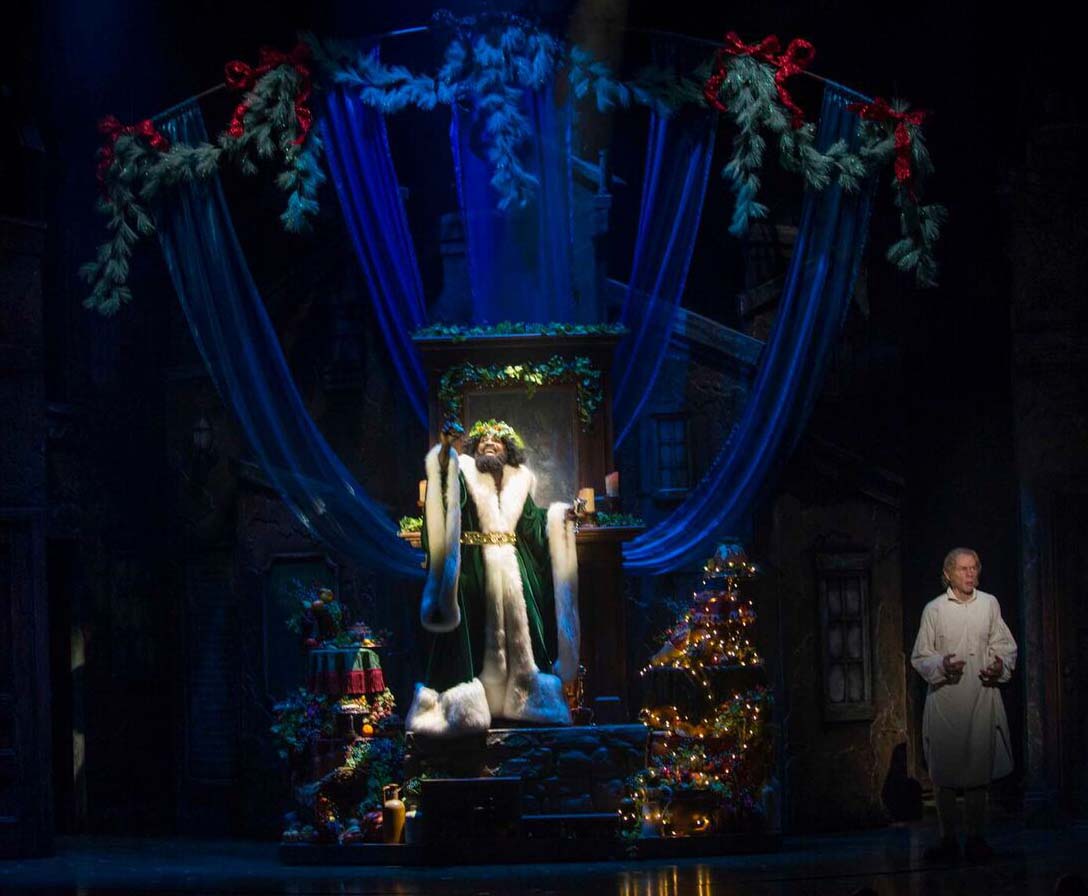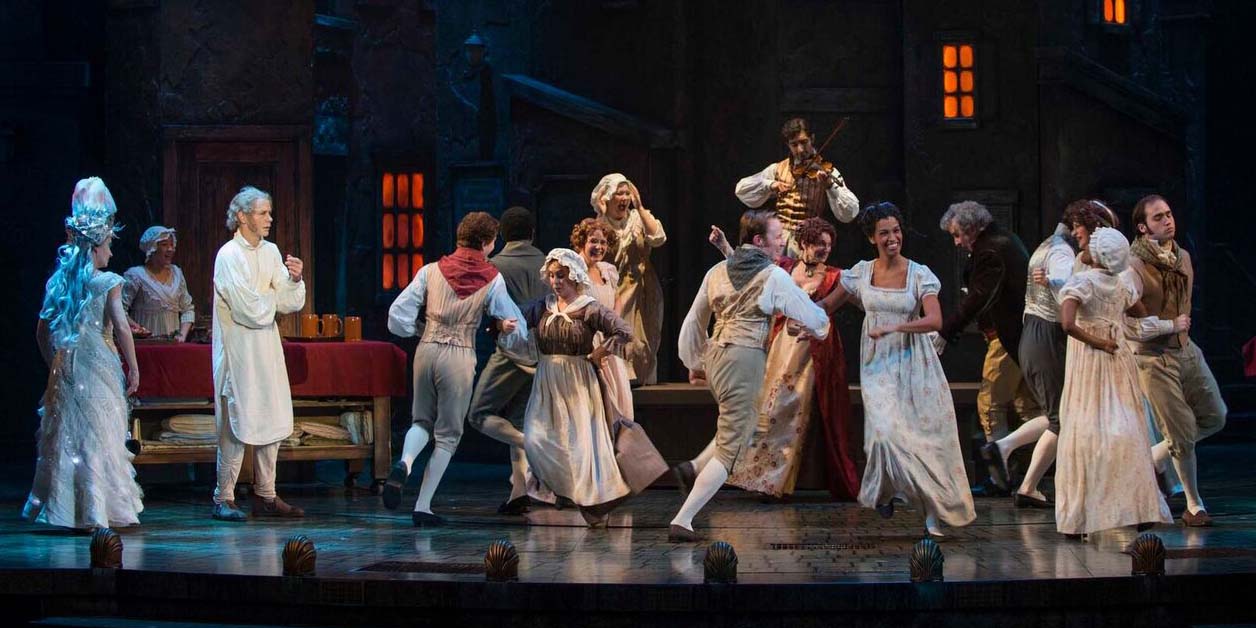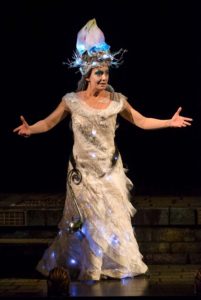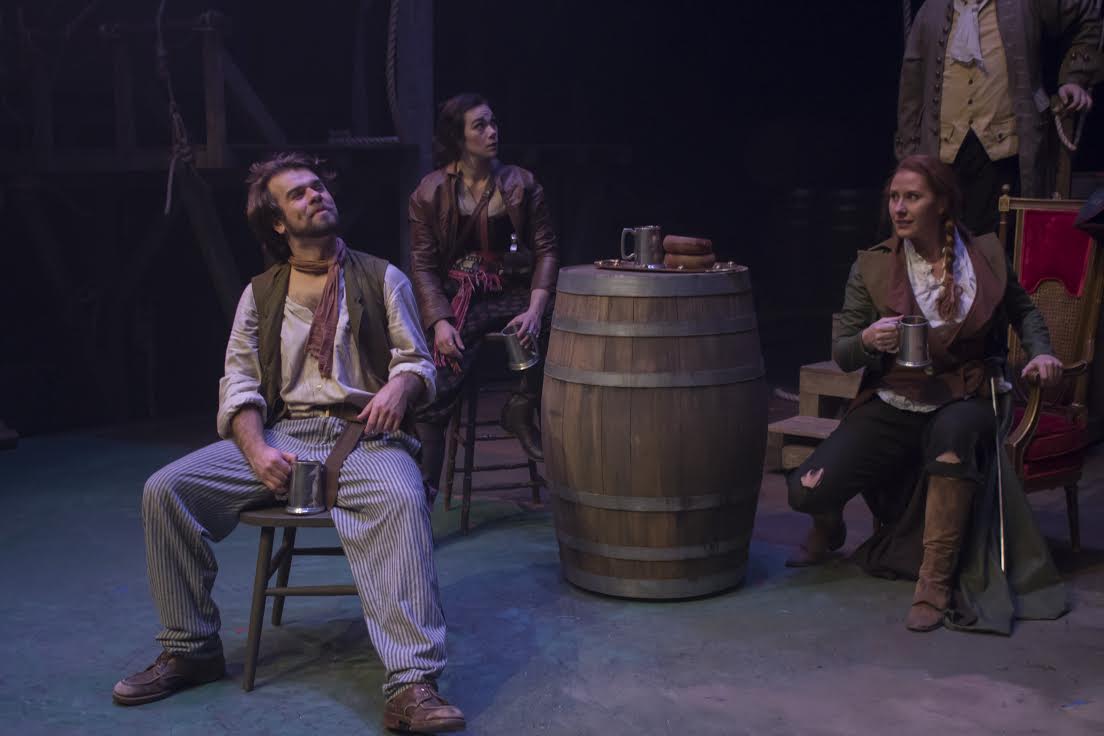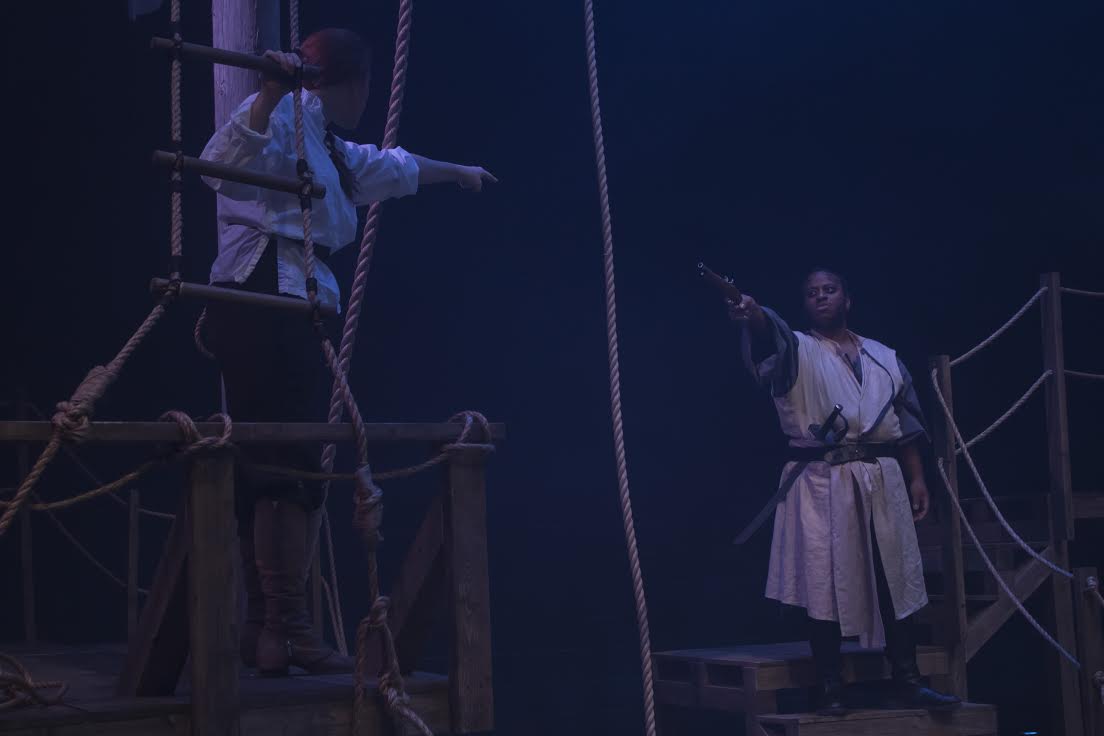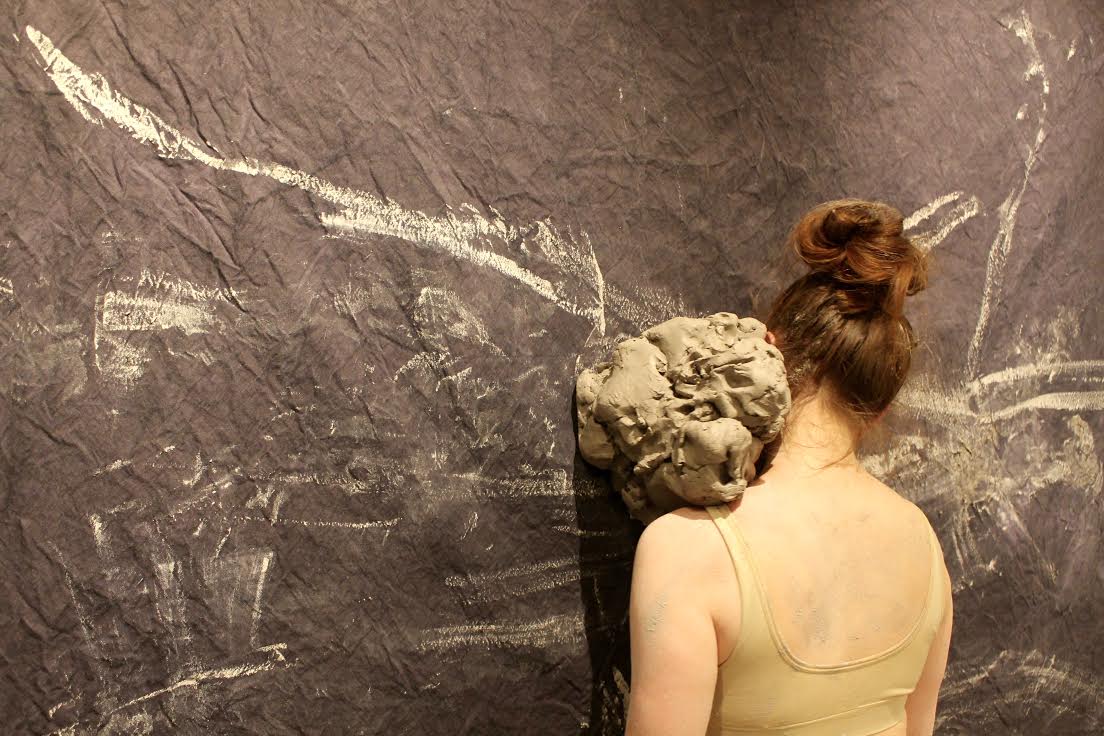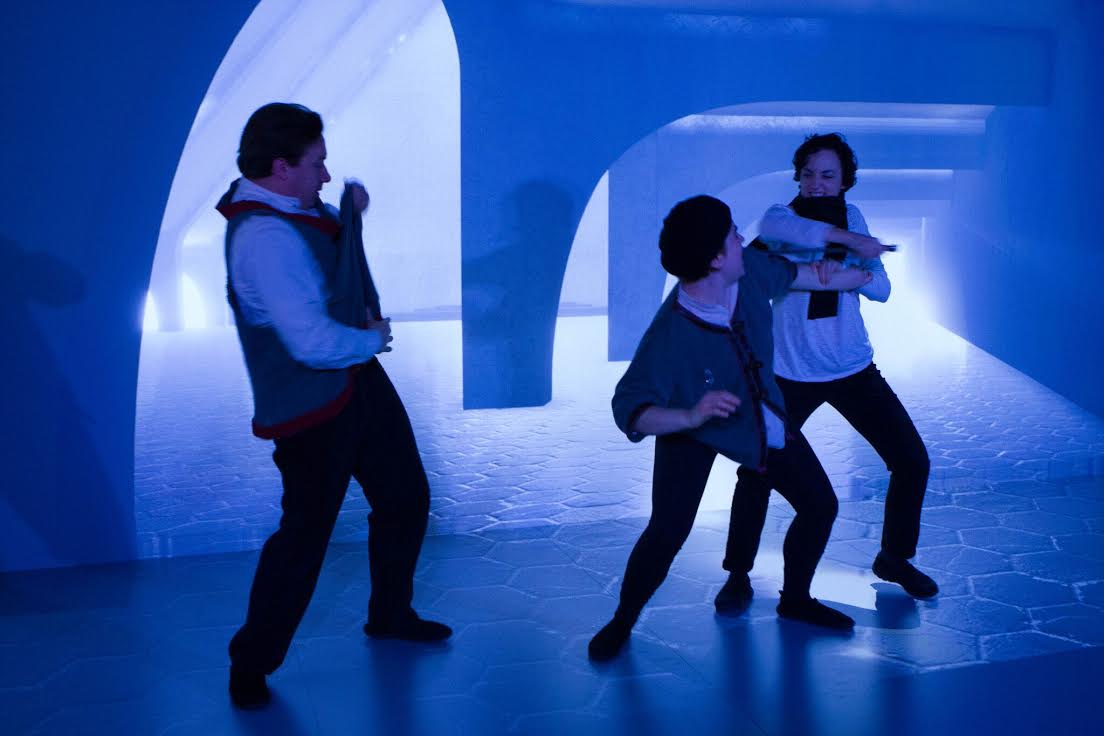
by Jeff Grygny
Over its four hundred year history, Shakespeare’s “Scottish Play” has appeared in countless guises, from highland regalia to Orson Wells’ voodoo version, from Imperial Japan to modernist abstraction. If well-performed, it remains as gripping a story of criminal ambition, metaphysical mystery, and bloody revenge as any action movie or psychological thriller. This recent production by Umbrella Group Theatre seems designed to test just how stripped down the play can get without losing it’s essential power: Director Bo Johnson has reduced the cast to four, the running time to 90 minutes in Todd Denning’s adaptation, and the stage to roughly the size of a spacious breakfast nook.
Ah, but this stage is like no other: it’s called MARVL, and it lurks in the basement of Marquette University’s grand temple of engineering. A shallow alcove with smooth gray walls and floor, it’s rimmed with tiny sparkling laser projectors that can cast theoretically anything a designer can imagine, that viewers wearing special glasses can see in three dimensions. The theatrical potential for the notoriously cursed Macbeth, with its bevy of ghosts, spirits and apparitions that lower-tech productions often leave to the imagination, is obvious. There’s also the risk of ending up looking like a corny computer game.
The graphic solutions developed by MARVL designer Chris Larkee are both literal and uncanny: the “dagger of the mind” is a claymore-sized graphic that seems to hover in space and rotates its handle toward Macbeth’s hand on cue. The weird sisters, clad in medieval schmatas, appear as translucent specters with disembodied voices that nevertheless synch up with their mouth’s movements. Banquo’s ghost, splotched in digital gore and vibrating disturbingly in a way no living body could, floats weightlessly over the CG banquet table, The projected scenery creates the illusion of vast impersonal architecture like de Chirico landscapes; the phrase “corridors of power” comes to mind— the design supports the play’s depiction of politics as a chilly calculus free of human obligations.
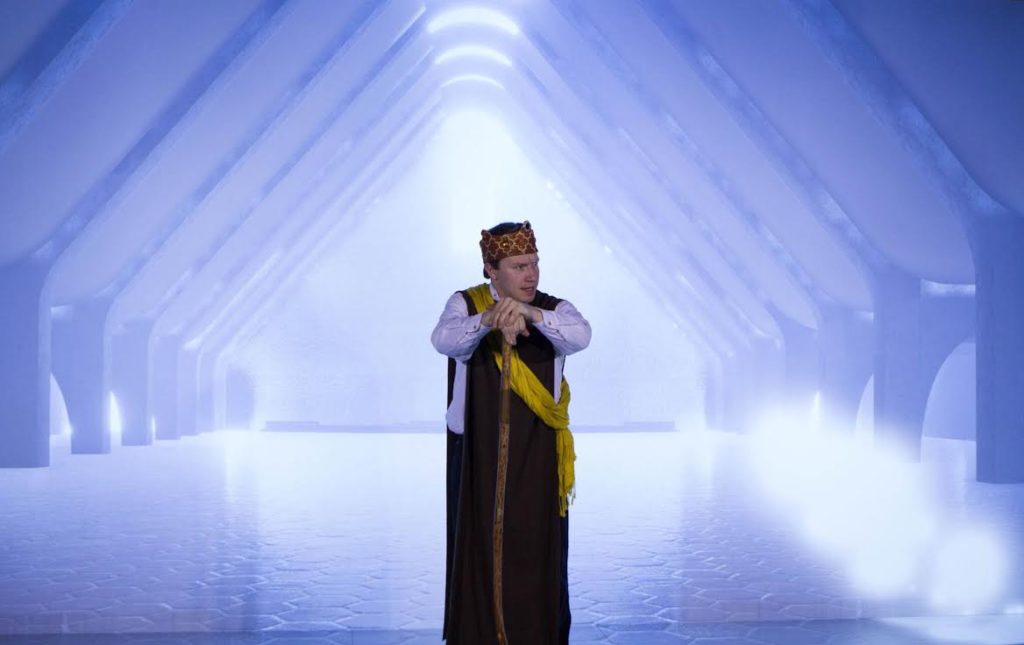
Fascinating as it is, all this technical sorcery would be but a gimmick without performances by skilled, dedicated players. The four performers cast rise admirably to the challenges of this demanding production. One might have wished for a little more breathing room around certain moments, but Johnson and company, wary of letting the energy leak away, keep things moving at a high clip. The overall effect is of a Macbeth that has been compressed for transmission, like a message in a digital bottle.

Even so, they miraculously preserve both the human drama and the play’s medieval ethos. In the title role, Todd Denning is high-strung and edgy, betraying a base insecurity that makes his transition from loyal lord to murderous tyrant believable. Libby Amato as Lady Macbeth is constantly making vertiginous emotional switchbacks, while conveying the vulnerability that ultimately can’t handle the consequences of her ambition. Allie Babich brings manly grit to her roles of Banquo and Malcolm the future king, while Rick Pendzich show’s both Macduff’s steely side and his human grief. They all flip back and forth between characterizations and costumes; only masterful actors could juggle such a multitude of characters without muddling the story. The climactic face-off between Macbeth and Macduff, punctuated by the clang of actual steel shortswords, brings all the play’s murky doubts to a definitive and exciting resolution.
Umbrella Group’s Macbeth magically captures the ancient story’s scope and drive, condensing it into a dense and artificial package. This is theater as information: detached from matter, conveyed by actor’s bodies floating in cyberspace. When Shakespeare is performed for the first time in space—whether in an orbiting station or as part of a long interplanetary journey— this is how it will be done: with minimal space, maximum humanity, and vast imagination.

